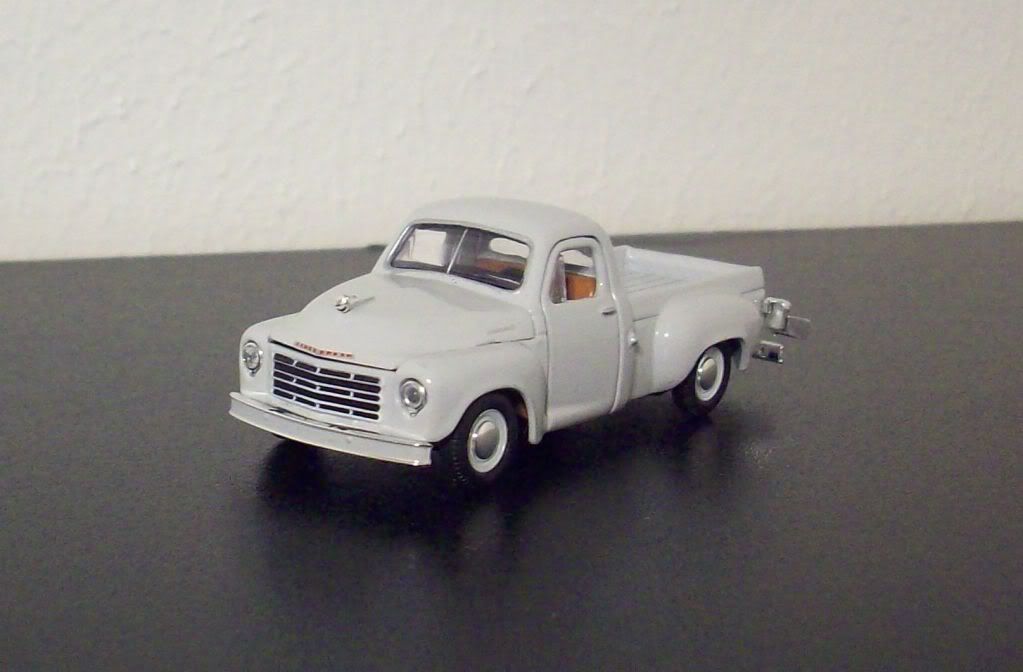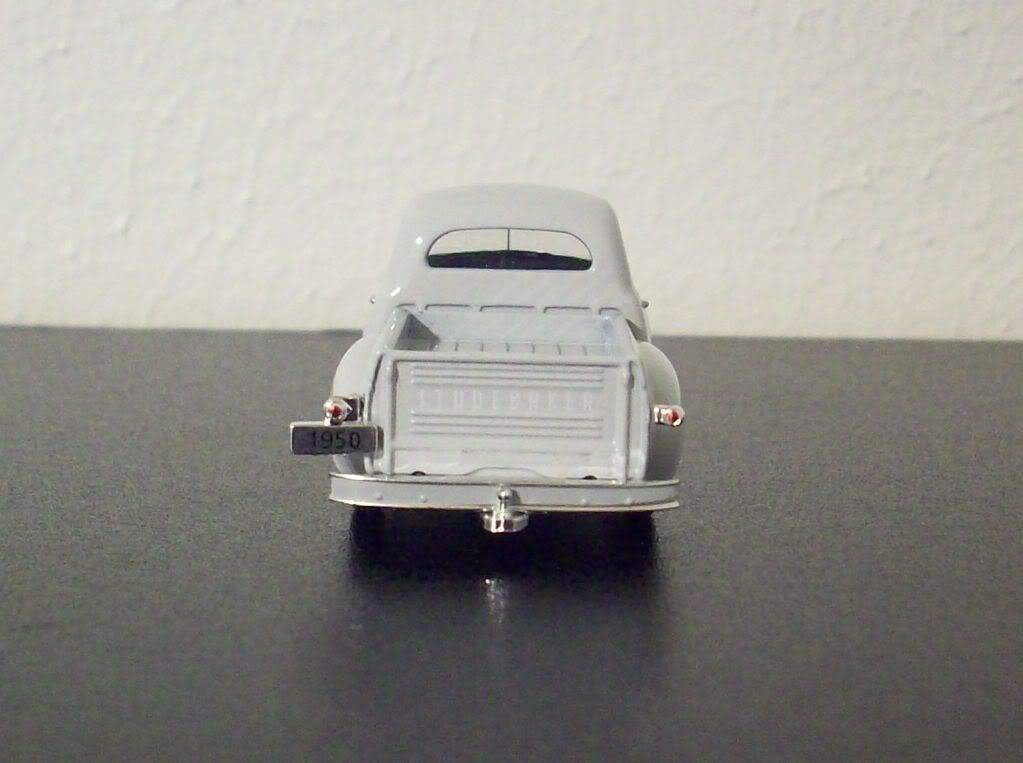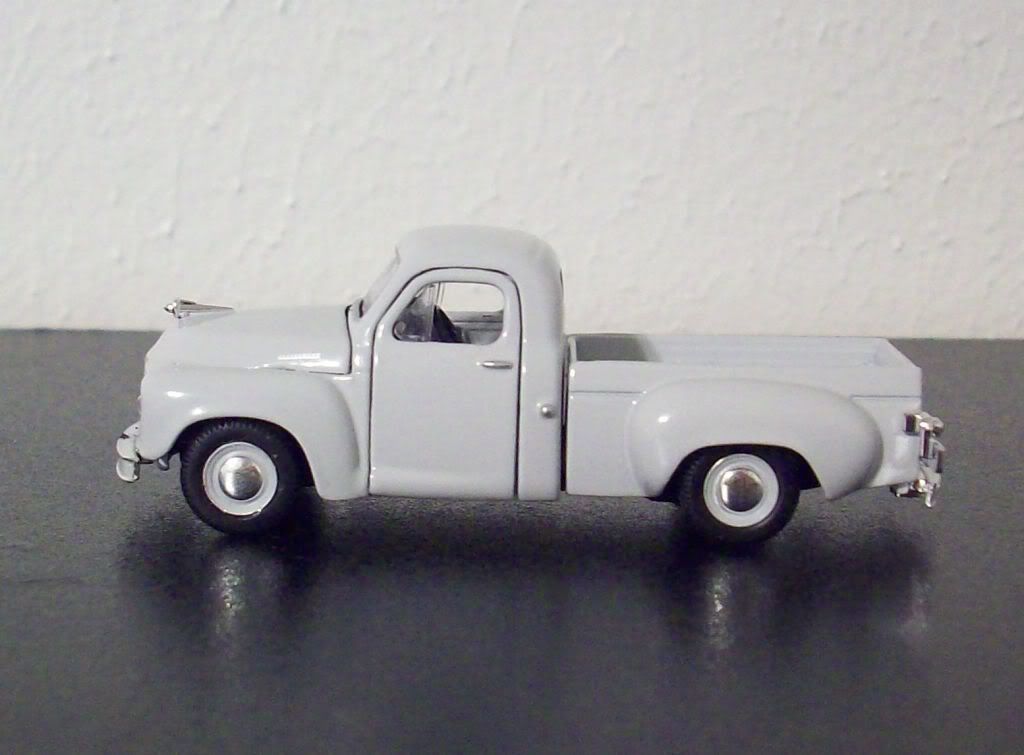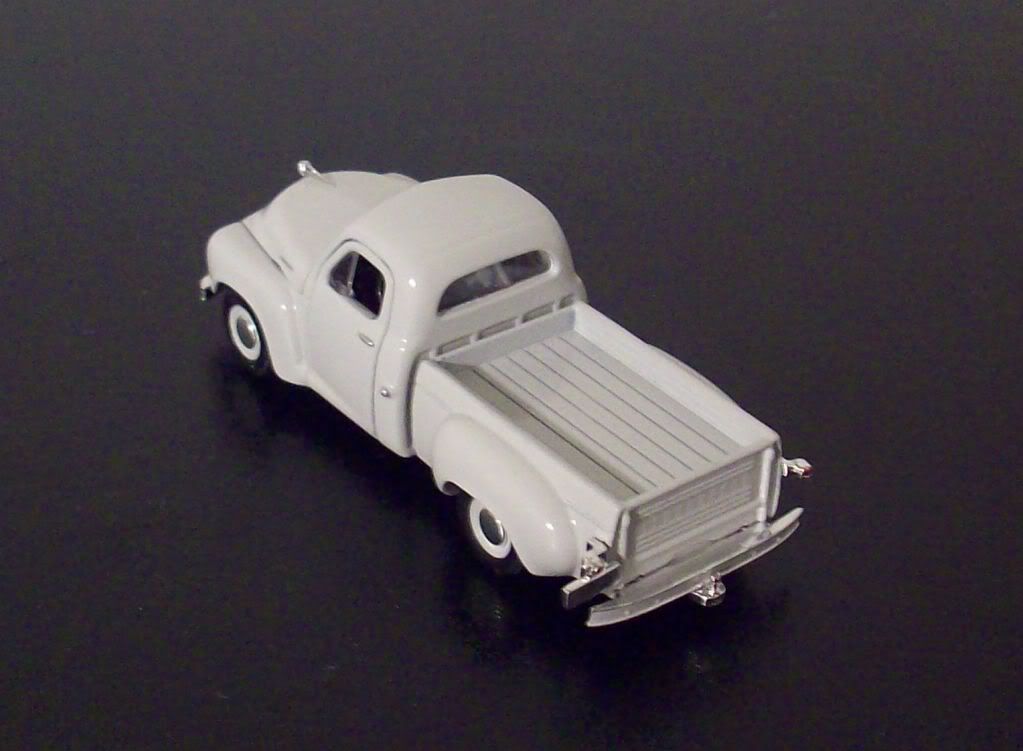
Today's truck of the day comes from Firehawk73's collection and is M2 Machines' Studebaker 2R.

The 1951 Studebaker 2R5 pickup was part of the Studebaker 2R series, the company's first postwar truck design. Billed as "The '49er," the Studebaker 2R family arrived in early 1948 to replace the prewar M-series.
Initially, there were four 2R models, spanning wheelbases from 112 to 195 inches. The 1/2-ton Studebaker 2R5 pickup and the 1-ton 2R15 pickup were powered by the 80-bhp Champion L-head six.
The 11/2-ton 2R16 and the 2-ton 2R17 pickups carried the Commander's 226-cid engine, with 94 horsepower. Standard transmission was a three-speed, with optional overdrive, two-speed rear axle, and "Hill-Holder" clutch.

I know this is a 1950 and not a 1951 but there was no info on the 1950 Studebaker Truck. I can find info on the 1949 and 1951 but 1950. I find that kinda odd but you really can't tell these trucks apart in those years. Only engine and small under carriage details were changed and not the bodies of these trucks.

The chassis, although all new, was conventional. What set the Studebaker 2R pickup apart was its styling, principally the work of Robert Bourke, a member of (and later head of) the Loewy Studios design team then under contract with Studebaker.
Sure, the 2R pickup was far less adventuresome than Loewy's "which way is it going?" 1947 passenger cars. Yet it was distinct from other pickups of the day, with clean lines unsullied by running boards, a relatively low silhouette, and more glass area than most rivals.
The Studebaker 2R5 pickup also boasted a safety feature not seen on Big Three trucks until the 1970s: a gas tank mounted outside the cab. Several other functional advances were important: a double-wall box to protect the outer sheetmetal from unfriendly cargo; variable-ratio steering for easier maneuverability; and gauges mounted directly in the firewall to give what Studebaker called "lift-the-hood accessibility," intended to cut repair costs.

The dash itself was rather plain, but had full engine instrumentation. Other standard features included armrests, pivoting vent windows, door-activated courtesy light, and vinyl bench seat. Metal door panels replaced the M-series' cardboard-lined frames, but a cardboard headliner hung on.
The Studebaker 2R5 pickup continued through 1953 with virtually no change apart from engine boosts (to 85 and 102 bhp) in 1950. Thus, the 1951 Studebaker 2R5 pickup pictured with this article is almost impossible to distinguish from 2R5s from other model years.
Studebaker's first V-8 arrived for the passenger cars in 1951, but wouldn't enter trucks until 1954, in the Studebaker 2R pickup's successor.

No comments:
Post a Comment